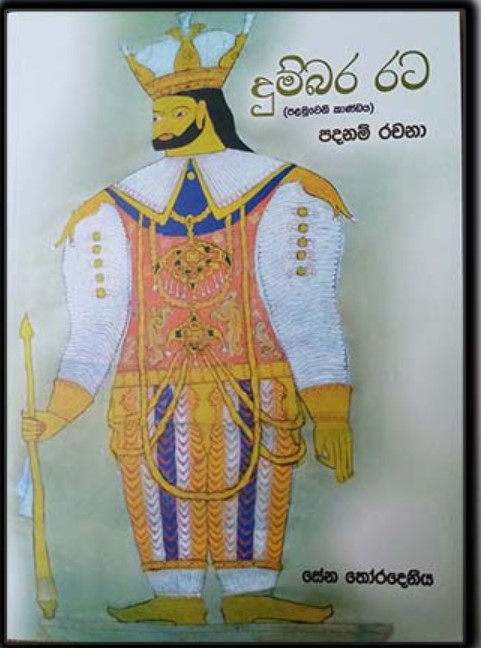Dumbara Beyond Colombo’s English Mists & Myths
Posted on March 31st, 2024
By Kanishka Hevavisenthi – Courtesy Sunday Island of 31 March 2024
(Sena Thoradeniya’s Latest Work: Dumbara Rata: Volume I: Foundation Essays)
* Returning to Kandy in 1949 Minnette de Silva set up practice, away from Colombo but at the heart of traditional Lanka – the home of lacquer work, Dumbara mats and religious & feudal architecture”.
* The Hilton pays homage to the country’s culturally rich heritage with Dumbara-inspired motifs, a nod to the country’s traditional weaving craftsmanship…”.
* Clothing & accessories made from traditional crafts such as Dumbara weaving, Beeralu lace, batik….”
The Dumbara Valley in the Central Highlands of Sri Lanka is inextricably and umbilically inked with the hereditary craft of textile weaving . At least, in the minds of the ruling denizens of the country. These minds rarely venture South, East & North out of that constipated suburb of London (& now NY) known as Colombo, and if they do, it’s only to ensure their cut of the tea plucked, rubber tapped, coconuts husked, graphite mined & garments assembled, then exported, along with workers… after all these commodities have, of course, been duly hanged, dried, quartered & calculated.
Dumbara usually recalls some motif, some weave they may step on, or some cloth they may exotically incarcerate their bodies in, to claim some occasional fashion, a sarong or a scarf, to scale some sartorial bridge to the dominant though repressed national culture- the Barefoot School of faux adoration & patronization of handicrafts – who the children of this valley appear to be in no hurry to inherit. They have little idea of the role that the people of this quantum of geography have played and still play in the drama of all our lives.
Enter stage left then is critic and award-winning novelist, Sena Thoradeniya’s latest oeuvre Dumbara Rata: Vol. I published last week. This seminal work on Dumbara consists of four volumes and if we dare measure this initial salvo by its cover, it indeed promises to unleash grand fireworks of what he ventures as a new field of study- Kandyan Affairs”. The Kandyan Kingdom aka Sinhale spread to all corners of the country.
The book’s jacket designed by Nalinda Seneviratna (from a photograph taken by Divoj Savitha Thoradeniya, author’s grandson) displays an intriguing self-portrait” of King Kirthi Sri Rajasinghe (1742-81), drawn on a length of Dutch cloth, donated to the high priest of a Raja Maha Viharaya in Patha Dumbara.

Tradition declares the painting a self-portrait”, yet no historical records the king himself as an artist. Kirthi Sri Rajasinghe’s reign traverses the Dutch invasions, and midst these wars he is yet seen as a benefactor of such arts as the Kandyan countryside’s temple murals.
This self-portrait” has been conserved by the Viharaya’s present incumbent, entering the public domain for the first time. (Thoradeniya does not disclose the name of the Viharaya for its safety and the present custodian of it!). Colombo’s so-called art historians & those domiciled abroad and western – trained archeologists & anthropologists are not even aware that such art exists.
Thoradeniya, he himself a proud son of an ancient village in Patha Dumbara, restricts the initial scope of his Kandyan Studies to Dumbara. An administrative region in the ancient Kandyan Kingdom, Dumbara turns out to be an integral part of Kanda Uda Pas Rata, sometimes called Rata Paha or Rata Hatha. Heexamines Dumbara’s evolution in the ancient kadaim poth (boundary books)and lekam miti (land rolls/cadastral registers), and how Dumbara, Hunnasgiriya Mountains, Mahaveli Ganga and Dumbara villages gain stature especially through folk poets. He provides valuable source material for Dumbara, and of the physical foundations of Dumbara, of Patha Dumbara (five divisions) and Uda Dumbara (six divisions), with detailed maps – topographical sheets prepared in the early 1900s, two Appendices, listing its ancient irrigation works so vital to the economy, the Colonial Project in Dumbara and the status of Dumbara after 133 years of British occupation, including a Bibliography.
Thoradeniya more recently exposed the forces behind the recent recolonization of the country – not as a struggle or a revolution but a counter-revolution. His 10-part essay titled Kandyan Chieftains Under the British” forms the foundation for his Kandyan Studies.
Volume 2 titled Dumbara Historical Foundations” therefore promise exciting accounts of how Dumbara people fought against South Indian invaders such as Elara, stories of the Dumbara kings and how Dumbara people battled the English in 1818 and 1848, along the way debunking such anthropologists as Gananath Obeysekera’s myth-making that D’Oyly’s espionage work did not encoil Dumbara.
Volume 3, Dumbara Economic and Social Foundations”examines lekam miti relevant to Dumbara, Dumbara villages, caste system, family names and personal names and its dialects. Most interesting are the accounts of land grab in Dumbara, plantation economy, how Grain Tax and other repressive taxes affected the Dumbara peasantry and of the collaboration of Kandyan chieftains with English rulers and plantation owners.
The final volume offers Dumbara Cultural Foundations”, the link between Dumbara and the Dalada, Dumbara temple paintings, Dumbara arts and crafts, folklore, gods and deities, ancient games and desserts, cultural expositions as Maname, Sandakinduru and Sokari; for the first time bringing into the public domain an ancient ola poetry book depicting the emergence of paththini halamba (Goddess Paththini’s anklet) from a stream in Patha Dumbara. Again, it’s unlikely our anthro-apologists have even considered such rarities.
Thoradeniya’s studies are vital, as our intellectuals love to clothe themselves in the latest of Europe’s epistemological fashions throwing around such words as feudal” when at least in its Marxist-Leninist sense, means an anterior pre-industrial capitalist epoch.
It ishoped a publisher will ensure the other three volumes will see not just the light of day, but the lights long after. The book written in Sinhala contains 270 pages, priced at Rs. 2500/= andavailable available at leading book shops.